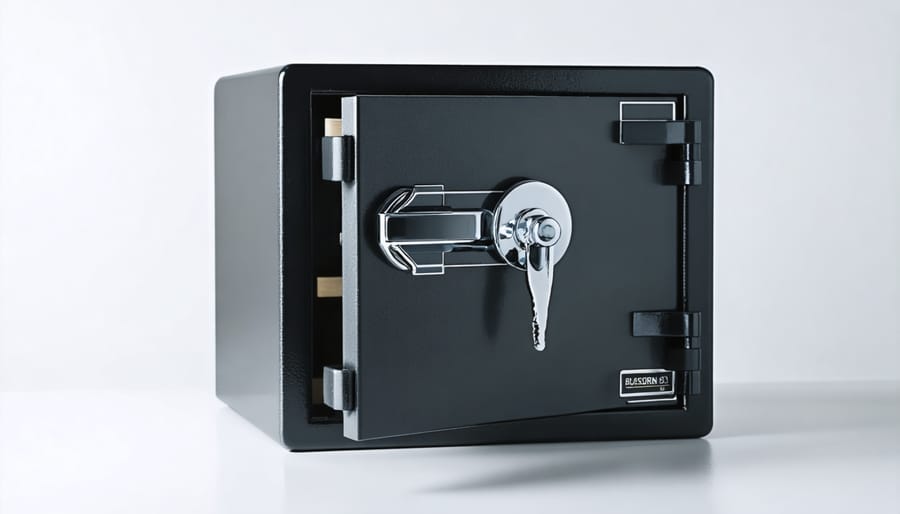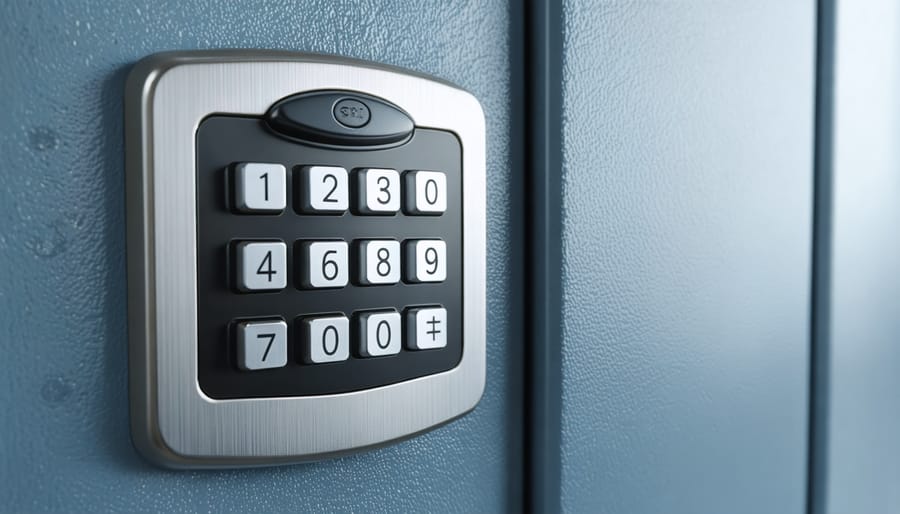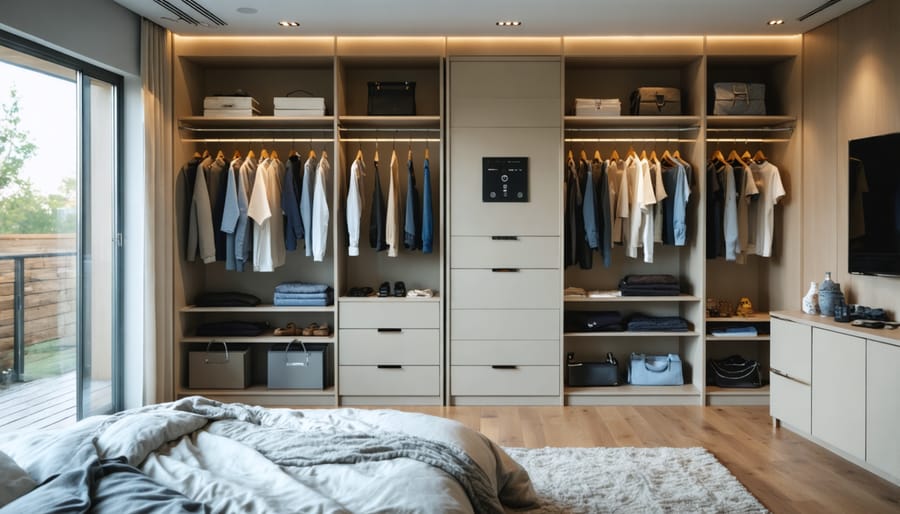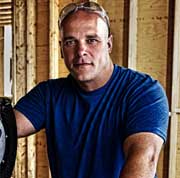**Understanding B-Rated Safes: Your Guide to Home Security That Fits Your Style**
B-rated safes represent the entry-level option in residential security—an unrated or minimally tested category that’s surprisingly common in homes across America. Before you dismiss them as inadequate, understand this: the “B” doesn’t follow an alphabetical grading system where “A” is better. Instead, it indicates these safes lack certification from major testing organizations like Underwriters Laboratories (UL), but that doesn’t automatically make them wrong for your needs.
Think of B-rated safes as the dependable Honda Civic of home security—they won’t withstand a professional heist crew with power tools, but they’ll absolutely deter opportunistic burglars, curious kids, and casual snoopers. Most feature basic pry-resistance, solid steel construction ranging from 12 to 14 gauge, and reliable locking mechanisms that create a significant barrier during the critical first five minutes of a break-in when thieves are most vulnerable.
For homeowners protecting passports, modest jewelry collections, essential documents, and small amounts of cash—rather than gold bars or museum-quality heirlooms—B-rated safes often provide the sweet spot between security and budget. They typically cost $150-$600, install easily in closets or under beds without reinforcing your floor joists, and blend seamlessly into home aesthetics without screaming “valuables here!”
The real question isn’t whether B-rated safes are “good enough”—it’s whether they match your specific risk profile, what you’re protecting, and how security fits into your overall home design vision.
What Exactly Is a B-Rated Safe?

Understanding Safe Rating Systems
When you’re shopping for a safe, you’ll quickly encounter alphabet soup: B-rate, C-rate, TL-15, and various UL ratings. Don’t let these labels intimidate you—they’re actually helpful guides to finding the right protection for your valuables.
Think of safe ratings like security levels at an airport. B-rated safes represent the entry point for residential security—they’re constructed with thicker steel than basic lockboxes (typically 1/4″ to 1/2″ body and 1/2″ door) but haven’t undergone formal testing by Underwriters Laboratories (UL). It’s like having a solid deadbolt on your door versus just a standard lock.
Moving up the scale, C-rated safes offer lighter construction with thinner steel, while UL-rated safes (RSC, TL-15, TL-30) have passed rigorous testing against specific attack methods and time frames. For most homeowners, these commercial-grade options exceed typical needs and budgets.
Here’s the practical takeaway: B-rated safes strike a sweet spot for home use—they provide substantial protection against smash-and-grab burglaries and prying eyes without the investment required for bank-vault security. When comparing best home safes, understanding these ratings helps you match protection level to what you’re actually securing, whether that’s important documents, jewelry, or firearms.
What Protection Does a B-Rating Offer?
A B-rated safe offers solid, practical protection for your home’s valuables—think of it as your reliable everyday defender rather than a fortress. These safes are designed to resist basic break-in attempts using common tools like pry bars, hammers, and hand drills for about 15-30 minutes. That might not sound like much, but consider this: most burglars spend less than 10 minutes inside a home, making a B-rated safe a genuine deterrent.
Construction-wise, you’re looking at steel bodies with plate thicknesses around 1/4 to 1/2 inch and reinforced locking mechanisms. They’ll protect your important documents, jewelry, and small electronics from opportunistic theft and provide fire resistance in many models—bonus peace of mind during emergencies.
Here’s the realistic take: B-rated safes won’t stop determined professionals with specialized tools or unlimited time, but for typical residential scenarios, they’re entirely sufficient. They strike that sweet spot between affordability and security, protecting against crimes of opportunity without requiring the budget or space for commercial-grade equipment. For most homeowners storing family heirlooms, passports, or modest cash reserves, a B-rated safe delivers exactly what you need.
Is a B-Rated Safe Right for Your Home?
What You Should Store in a B-Rated Safe
A B-rated safe provides reliable protection for many of your home’s valuables, making it perfect for everyday security needs. Think of items that would be difficult or costly to replace, but don’t necessarily require bank-vault level protection.
**Important documents** are ideal candidates—birth certificates, passports, property deeds, vehicle titles, and insurance policies all deserve secure storage. You’ll have peace of mind knowing they’re protected from fire and theft, and you’ll always know exactly where to find them during emergencies.
**Jewelry and collectibles** fit beautifully in a B-rated safe, especially pieces with sentimental value or moderate monetary worth. Family heirlooms, watches, and cherished items from your travels can stay safe without requiring a more expensive security solution.
Consider storing **emergency cash** (typically $500-$2,000), **external hard drives** with photo backups, **small electronics** like spare smartphones or tablets, and **medication** that needs secure storage. Many homeowners also keep **spare keys** for vehicles and vacation properties tucked away safely.
The key is matching your actual needs to the protection level—if you’re safeguarding items worth under $5,000 total and want reliable home security without breaking the budget, a B-rated safe hits that sweet spot perfectly.
When You Might Need More (Or Less) Protection
Let’s be real—not everyone needs a B-rated safe, and some folks might actually need something more robust. Here’s how to think about your actual protection needs without anyone trying to oversell you.
**Consider upgrading to a higher-rated safe** if you’re storing genuinely irreplaceable items like extensive coin collections, significant amounts of cash (we’re talking thousands, not your emergency $200), or items with serious sentimental value that insurance can’t replace—like your grandmother’s heirloom jewelry passed down through generations. If you run a home business with customer data or hold professional documents that could devastate your livelihood if stolen, investing in a TL-15 or TL-30 rated safe makes sense.
**A simpler lockbox might suffice** if you’re mainly organizing paperwork you could replace with some phone calls—think birth certificates or insurance policies. A basic fireproof document box handles these just fine and costs considerably less.
**B-rated safes hit the sweet spot** for most households with moderate valuables. They’re perfect for typical jewelry collections, a few thousand dollars in emergency cash, personal electronics like tablets, and important documents you’d rather not lose. They deter opportunistic thieves who want quick, easy targets.
Think of it this way: a B-rated safe is like a solid deadbolt on your door—it won’t stop a determined professional, but it’ll send most burglars next door to easier pickings. Check out our guide to top-rated home safes to explore options across different protection levels that match your specific situation.
Key Features to Look for When Shopping
Size and Capacity Considerations
Choosing the right safe size requires more than just measuring your current valuables—you need to think ahead! Start by gathering everything you plan to store: important documents, jewelry, electronic backups, heirlooms, and cash. Now here’s the golden rule: **go bigger than you think you need**. Most homeowners underestimate their storage requirements and find themselves wishing they’d upgraded within a year or two.
To measure effectively, stack your items and add at least 30% extra capacity for future needs. Remember that interior dimensions matter most—thick walls on B-rated safes reduce usable space significantly. A safe advertised as 1.2 cubic feet might offer considerably less actual storage once you account for the locking mechanism and shelving.
Consider both vertical and horizontal space. Floor safes work wonderfully for flat documents and cash, while upright models accommodate hanging files and larger items. Think about accessibility too—will you need frequent access, or is this mostly for long-term storage? If you’re protecting family passports, birth certificates, and tax records you reference regularly, a poorly sized safe becomes frustrating quickly. Sketch out your space, measure twice, and don’t be afraid to choose the next size up. Your future self will thank you!
Lock Types: Mechanical vs. Electronic
When choosing your B-rated safe, you’ll encounter two main lock types, each with its own personality. **Mechanical locks** are the traditional dial combinations—think classic bank vault vibes. They’re incredibly reliable, never need batteries, and there’s something satisfying about that tactile click-click-click as you spin the dial. The downside? They take a bit longer to open (plan for about 30 seconds versus 5), and if you’re juggling grocery bags or rushing during an emergency, that precision dialing can feel fiddly. Plus, combination changes require a locksmith visit.
**Electronic locks** offer modern convenience with keypad entry—just punch in your code and you’re in. They’re perfect for busy households where quick access matters, and you can easily change codes yourself whenever needed (great if you’ve shared access with someone who’s moved out!). Many models even track entry attempts. The catch? They require battery changes every year or so, though most will warn you weeks in advance. Some folks worry about technology failing, but quality electronic locks include backup key access for peace of mind. Consider your daily routine: are you a tech-embracer who values speed, or do you prefer tried-and-true mechanical simplicity?

Fire Protection Features
Here’s something many people don’t realize: B-rated safes focus on burglary protection, not fire resistance. If you want your important documents and valuables protected from flames, you’ll need to look for safes with separate fire ratings—and yes, they’re often sold together as combination models.
Fire ratings are straightforward once you understand them. A rating like “1-hour at 1200°F” means the safe’s interior should stay below 350°F (the point where paper chars) for one hour in a fire reaching 1200°F. For most homes, a 30-minute rating provides solid protection since residential fires average that duration before firefighters arrive.
Is the added cost worth it? If you’re storing irreplaceable items like birth certificates, property deeds, or family photos, absolutely. A basic fire rating typically adds $100-300 to your safe’s price—reasonable insurance for peace of mind. However, if you’re primarily securing jewelry or cash (which survive fires better than paper), you might skip the fire protection and invest those dollars in a higher burglary rating instead. Consider what you’re actually protecting to make the smartest choice for your home.
Installation and Anchoring Options
Once you’ve selected your B-rated safe, placement and anchoring become your next mission—and trust me, this step matters more than you might think. A safe that isn’t properly secured is essentially a heavy box waiting to be carried away by a determined thief.
Choose a discreet location that’s not immediately visible from entry points. Ground-floor closets, basements, or even a sturdy built-in cabinet work beautifully. Avoid damp areas that could compromise both the safe and its contents.
Now for the anchoring part: most B-rated safes come with pre-drilled holes and hardware for bolting directly to your floor or wall. You’ll need a hammer drill, masonry bits (for concrete), and lag bolts. The process is surprisingly straightforward—mark your holes, drill, insert anchors, and secure with bolts. Aim to use all mounting points provided.
If you’re installing on wood flooring, bolt through into floor joists for maximum strength. This weekend project typically takes under an hour but dramatically increases your safe’s security effectiveness.
Cost Expectations and Value Considerations
When you’re shopping for a B-rated safe, expect to invest anywhere from $150 to $800, depending on size, features, and construction quality. This middle-ground pricing makes B-rated safes an attractive option for homeowners who want solid protection without the premium price tag of higher-rated models.
Several factors influence what you’ll pay. Larger safes naturally cost more, as do those with fire resistance, specialized locking mechanisms, or interior organizational features like adjustable shelving. Wall-mount models typically run less expensive than floor safes, while biometric locks add $50-150 to the base price. Brand reputation matters too—established manufacturers often charge more, but they’re backing their products with better warranties and customer support.
Here’s the smart approach to getting maximum value: First, identify your absolute must-haves. If you’re storing important documents, fire protection is worth the extra investment. For jewelry and small valuables, focus your budget on a quality locking mechanism instead. Don’t overspend on capacity you won’t use—a compact, well-built safe beats a spacious but flimsy one every time.
Look for sales during major holidays when home security products often see discounts. When we reviewed top options, we found that mid-tier brands frequently offer comparable quality to premium names at 20-30% less.
Avoid the temptation to go ultra-budget. Safes under $100 rarely provide meaningful security—you’re essentially buying a metal box with a fancy lock. Instead, think of your safe as insurance for your valuables. Spending $300-500 on a quality B-rated safe that actually protects your belongings is far smarter than replacing stolen or damaged items later.
Where B-Rated Safes Fit in Your Home Design
Clever Placement Ideas for Different Spaces
Finding the perfect spot for your B-rated safe is like choosing the ideal hiding place in a game of hide-and-seek—you want it secure yet accessible when you need it. Let’s explore some clever placement ideas throughout your home.
**Master Bedroom Closet**
This classic choice offers convenient access while keeping your safe out of plain sight. Consider anchoring it to the floor in a back corner, perhaps behind hanging clothes or stacked shoe boxes. The privacy factor is excellent, but remember that closets are often the first place intruders check.
**Home Office**
Placing your safe in a home office provides logical justification for its presence while keeping important documents nearby. Built-in cabinetry or a dedicated closet works beautifully here. The downside? If you share your workspace or have frequent visitors, discretion becomes trickier.
**Basement or Utility Room**
These spaces offer natural camouflage opportunities—your safe can blend among storage shelves, behind seasonal decorations, or even within a custom-built workbench. The concrete floors make anchoring a breeze, though accessibility might suffer if you need frequent access.
**Guest Bedroom Closet**
Often overlooked by both guests and potential intruders, this location strikes a nice balance between discretion and accessibility. Just ensure you’ve properly secured it to prevent removal.
**Pro tip**: Wherever you choose, always bolt your safe to the floor or wall studs. Even the best-hidden safe becomes vulnerable if someone can simply carry it away.

Keeping Your Safe Discreet (Without Sacrificing Access)
A B-rated safe doesn’t have to announce itself to everyone who walks into your room. Think of placement as part of your home’s storytelling—tuck your safe inside a closet behind hanging clothes, or position it at the base of your wardrobe where shoe racks naturally conceal it. For floor models, consider sliding one beneath a skirted console table or nightstand with a fabric drape that reaches the ground.
Wall-mounted safes offer brilliant concealment opportunities behind artwork, mirrors, or even a decorative tapestry on a swing-arm mount. If you’re handy with basic carpentry, build a false drawer front in your closet system that opens to reveal your safe. The key is integrating security into spaces you already use—like converting unused closet corners or that awkward nook beside your dresser—so accessing your valuables feels natural rather than disruptive to your daily routine. Your safe becomes part of the room’s flow, protecting what matters without dominating your design aesthetic.
Common Mistakes to Avoid
Let me share some friendly insider knowledge that’ll save you headaches down the road. First up, don’t get tunnel vision on the “B-rating” label alone. I’ve seen folks purchase a perfectly rated safe, only to realize it’s too small for their growing collection of valuables or doesn’t fit in their desired location. Measure twice, buy once—especially when you’re talking about something this substantial.
Here’s another common slip-up: assuming any B-rated safe is fireproof. These ratings specifically address burglary resistance, not fire protection. If you’re storing important documents or digital media, you’ll need to verify fire ratings separately. Think of it like buying a car—just because it has great safety features doesn’t mean it automatically gets amazing gas mileage.
Many homeowners also underestimate installation requirements. That beautiful safe you found online? It might weigh 500 pounds and need professional installation, especially if you’re placing it on an upper floor. Factor in delivery and setup costs from the start to avoid sticker shock later.
Finally, don’t skimp on quality to save a few bucks. A cheap safe with a “B-rating” sticker might technically meet minimum standards but use inferior materials that defeat easily. Research manufacturers’ reputations, read real customer reviews, and remember that protecting your valuables is an investment worth making properly. Your future self will thank you for choosing quality over the bargain-basement option.
Choosing the right safe for your home doesn’t have to feel overwhelming. B-rated safes offer that sweet spot between solid security and budget-friendly pricing, making them an excellent choice for most homeowners looking to protect jewelry, important documents, cash, and other valuables without breaking the bank. They’re not industrial-grade fortresses, but for residential security needs, they deliver meaningful protection against casual theft and unauthorized access.
The beauty of adding a B-rated safe to your home is that it’s a completely achievable project. Whether you opt for a compact model that tucks into your closet or a larger unit that becomes part of your bedroom design, you’re taking a proactive step that brings genuine peace of mind. Installation is straightforward, especially with modern mounting options, and the investment typically pays for itself in reduced worry alone.
Ready to move forward? Take a moment to explore our recommendations and identify which features matter most for your specific situation. Consider your budget, the items you’re protecting, and where the safe will live in your home. Remember, the best safe is the one you actually use consistently.
Protecting what matters most isn’t just smart—it’s empowering. You’ve got this, and your future self will thank you for taking action today.


